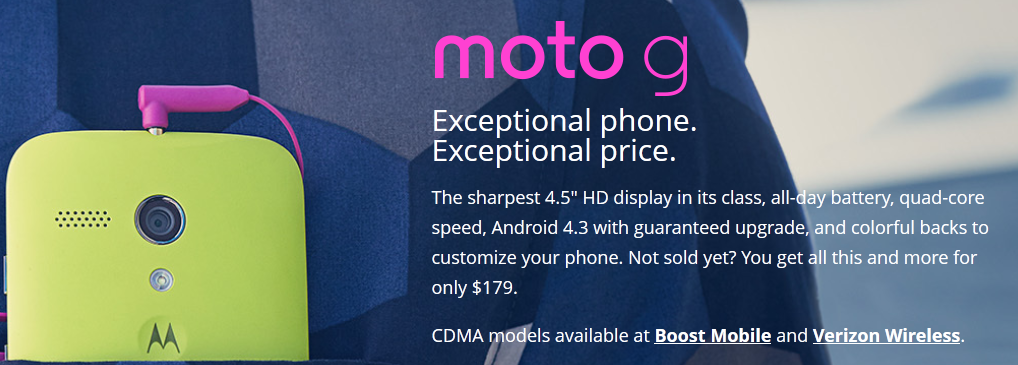Global marketing is an area where Motorola displayed a weak point as a company. Motorola has been marketing its products to U.S consumers ever since the company was started, but did not take any steps to market it outside the U.S. This issue prevailed until it was acquired by Google in 2012. After the acquisition, they introduced products such as Moto G which was targeted at emerging markets worldwide. They were focused to sell the Moto G in international markets with a low price point.
It was a successful strategy by Motorola, since Moto G did well in foreign markets as well as in the U.S.A. Additionally, one of Motorola's executive stated that Moto G is "the most successful, highest selling smartphone in Motorola's history." In contrast, they decided to keep the Moto X line up mainly in the U.S, even though there is a huge demand for it in Europe markets.
There is another factor that could play a huge role in their global marketing layout. The company was recently purchased by Lenovo which is a Chinese company that produces laptops and other electronic devices. This acquisition will benefit Motorola's long term global vision, since Lenovo is a hardware company that has strong ties with international markets. With their relationships, Motorola has a good chance of acquiring off-shore markets with minimum effort.
Job Outsourcing
Motorola was in the center of debate when they outsourced their cell phone production facility in 2000. As a result, they laid off 1200 employees from Iowa and Florida production facilities. The plan was initiated to cut down the manufacturing cost of Motorola's mobile phones.
However, they radically changed their approach in the recent years, as they decided to relocate a factory in the United States. They resurrected an old Nokia factory to assemble their latest smartphone Moto X. Consequently, they hired 2500 employees to work in their factory, and they proudly advertised it as a product made in the U.S.A. It was a bold move by Motorola, and it was admired by many Americans, since it opposes the trend of outsourcing local jobs.
 |
| Workers At The New Motorola Factory |










